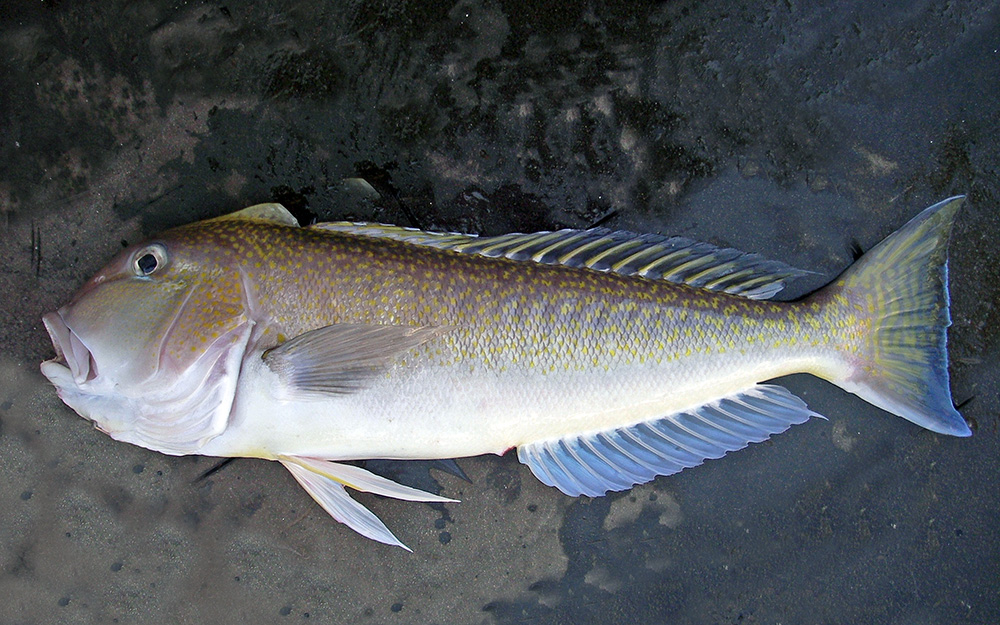Great northern tilefish
(Lopholatilus chamaeleonticeps)

Classification
General data
The great northern tilefish (Lopholatilus chamaeleonticeps) or golden tile, is the largest species in the family Malacanthidae (tilefishes). It grows to a length between 38 to 44 inches (97 to 112 cm).
The back of the fish is iridescent and blue-green in color, with many yellow and gold spots. The belly is white. The head color changes from a light blue to a pinkish mix during spawning season. Specimens have a tone of blue under their eyes. Their pectoral fins are a light tone of sepia, and the margin of the anal fin is a purplish-blue color.
The great northern tilefish is a slow-growing and long-lived species that has four stages of life. After hatching from eggs, the larvae are found in plankton. As they grow into juveniles, the individuals seek shelter until finding or making their own burrows. As adults, the tilefish continue to expand their burrows in the sediment throughout their lives. The diet of the larvae is unknown, but presumed to consist of zooplankton; juveniles and adults feed upon various benthic invertebrates, crustaceans, and fish. After reaching sexual maturity between 5 and 7 years of age, females lay eggs throughout the mating season for the male to fertilize, with each female laying an average of 2.3 million eggs.











